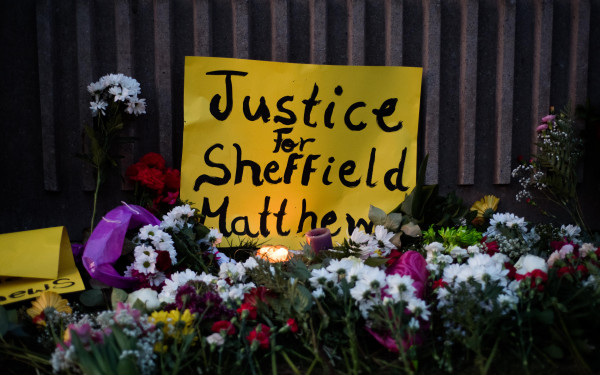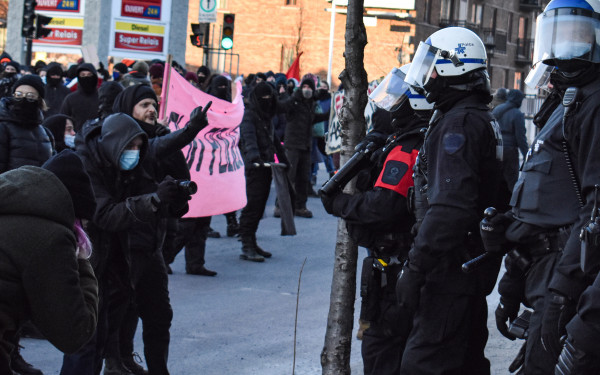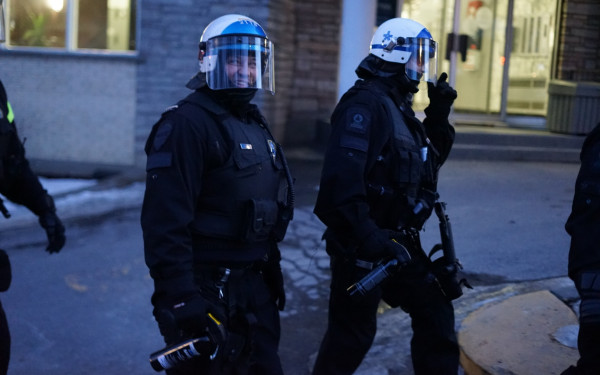A march against police brutality was held on the 26th International Day Against Police brutality
The Collective Opposed to Police Brutality has been organizing this march since 1997
On March 15, dozens of protestors met at Lionel-Groulx metro station to fight against police brutality.
The protest was held on the 26th International Day Against Police Brutality, and was organized by The Collective Opposed to Police Brutality. They have organized a demonstration against police brutality every year since 1997.
At 5:30 p.m., the demonstration began with a speech by one of the organizers. The speaker acknowledged the colonial history behind the land where the demonstration was, calling out the problematic history of Lionel Groulx. He made specific reference to Groulx's involvement in colonizing Indigenous land by being a missionary. He also denounced how the Lachine Canal, not too far from the place of meeting, enables resource extraction from Indigenous land. The speaker connected Montreal's deeply colonial past to its ongoing colonial present.
“This ain’t just past history,” he said. “We could use more money for community groups, social programs, access to housing, […]. But no. We got $50 million more for the SPVM.”
In the COBP’s press release, which was released after the march, they said, “we must indeed shut down the colonial police. It's colonial, because that's what the police are for, to defend the settlers."
Throughout the speeches, a protestor distributed slips of paper with a lawyer’s phone number and advice on dealing with police, both in French and English. Protestors had different kinds of equipment including protective goggles, respiratory protection, bandages, and all-black clothing.
Protestors began marching around Saint-Henri at 6 p.m. More police appeared on the scene and followed the protest as it became mobile.
Many protestors carried signs with messages such as “I would abort in case he became a cop,” and “Cops don’t keep us safe.” When a protestor, Cordelia, was asked what they wanted to say to police, they answered “burn.”
Some protestors also wore clothing with the ANTIFA flag, the Black Lives Matter logo, and the communist hammer and sickle. A protestor, Blythe, with the Antifa flag on their sign, spoke on why they were protesting. “Police are really getting out of hand. Because they are literally the system they don't have anyone watching over them or telling them [what they do] is not okay,” they said.”
As the march continued, some protestors utilized the resources they could find on the street to try blocking police, on bikes or otherwise, from chasing them. As stated in the COBP’s press release, “the demonstrators decided to keep control of the sidewalks rather than be chased off the streets.” They used garbage and recycling bins, street signs, and metal fences as impromptu barricades.
At 6:39 p.m., police reinforcements were visible from the tail end of the group. A contingent of two large police cabs, meant to transport whoever got arrested, riot police and police on bikes followed the marchers’ route. Riot and cycling police tried to block the protestors from the sidewalks throughout the entire march.
A protestor, Kirke, had a sign that read “In 2020, 55 people were shot by police in Canada. 34 died. 48 per cent were Indigenous, 19 per cent were Black.” As the protestors stopped in the middle of the train tracks on Notre-Dame St. W., Kirke spoke on these statistics. “I did research before the protest to see statistics on police brutality,” they said. “In Canada, almost 50 per cent of victims of police brutality are Indigenous people. I think it’s important to mobilize as allies to give a voice to those who don’t have one.”
At 6:50 p.m., at around the same time that certain shops’ windows were broken, the protest was deemed illegal over police loudspeakers. Establishments that were targeted included Dollarama, Banque Nationale, and SQDC, on Notre-Dame St. W.
Within 10 minutes of the announcement, the police began throwing tear gas at protestors and chasing them to scatter the march. Still, protestors yelled “on reste groupés!” As groups fled from police on bikes, protestors made sure no one took a dangerous route, warning each other to avoid alleys.
The police, however, were succesful in dispering people, by 7:30 p.m there was a line of police vans, cars and bikes all over Saint-Jacques St., as well as dozens of riot police.
(The protestors interviewed in this article, as well as the speaker, made the choice to remain anonymous. All names used are aliases.)

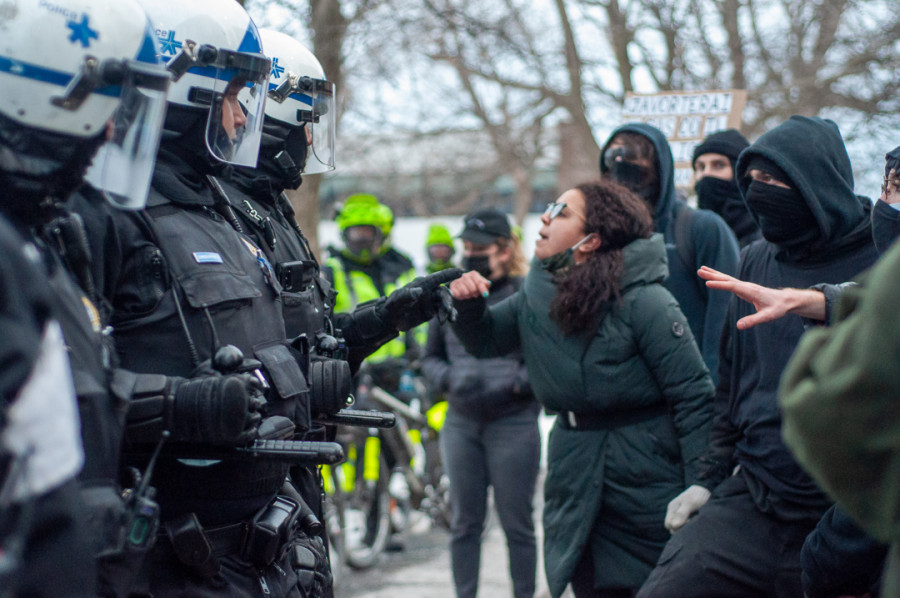
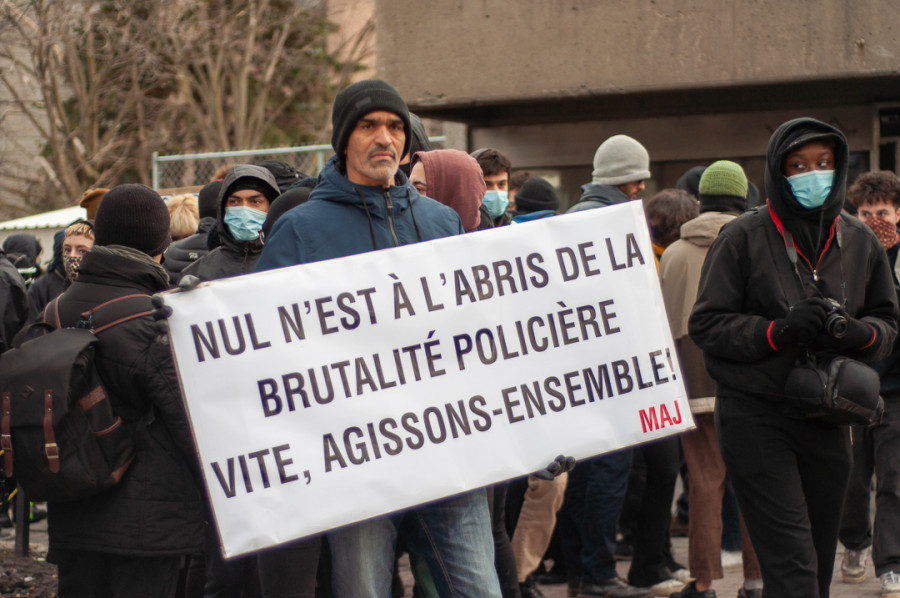
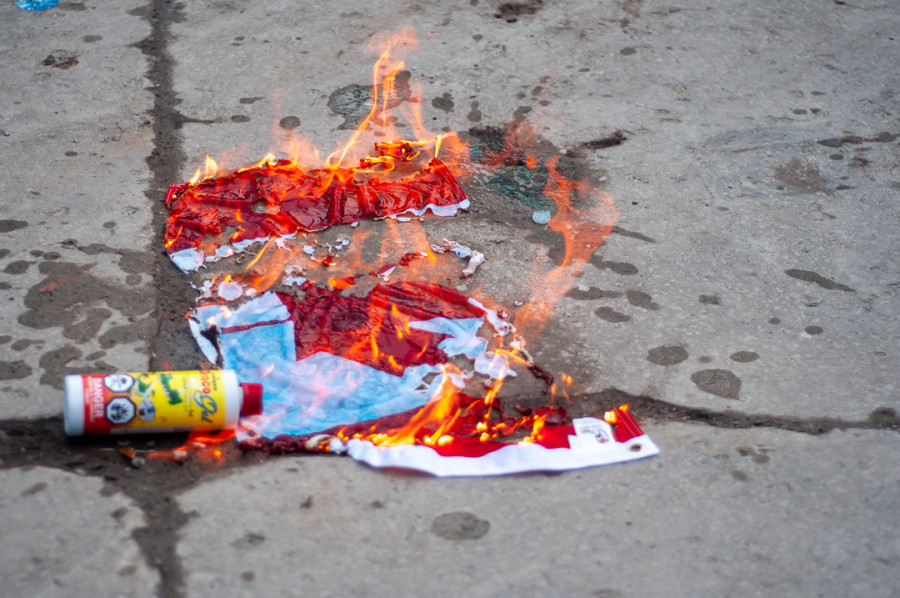
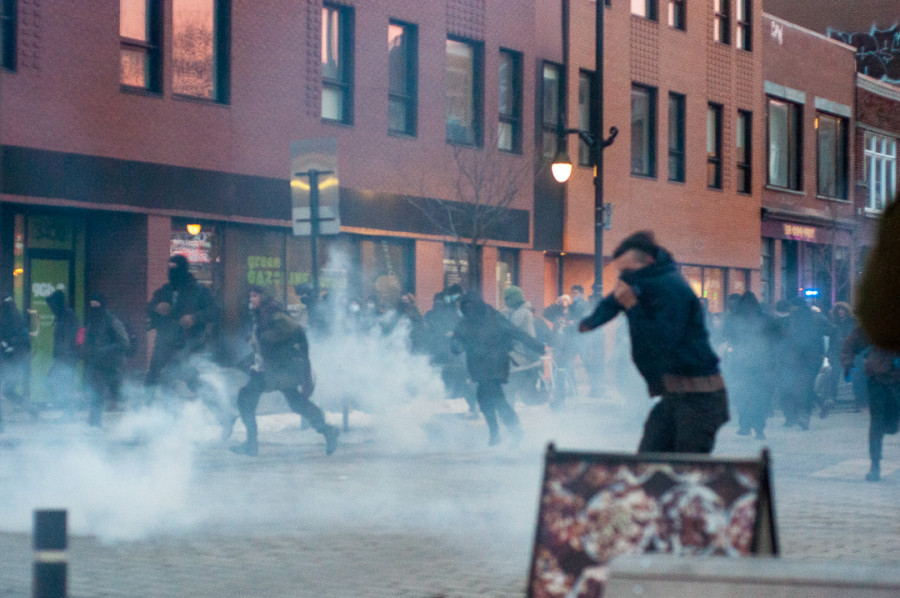
_600_832_s.png)


